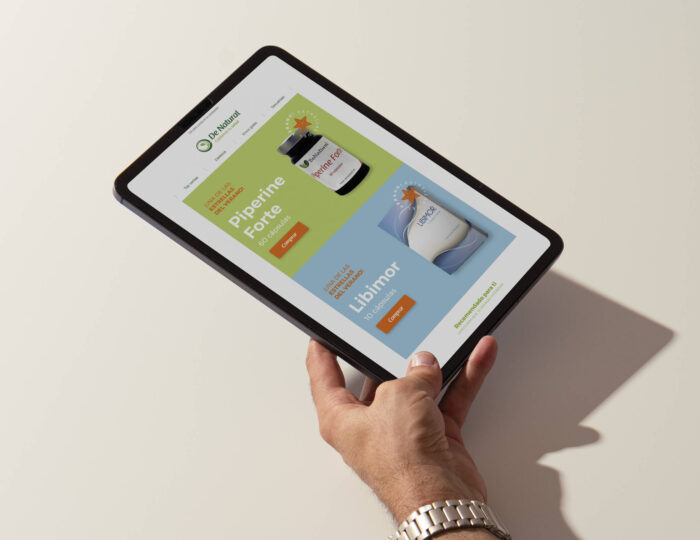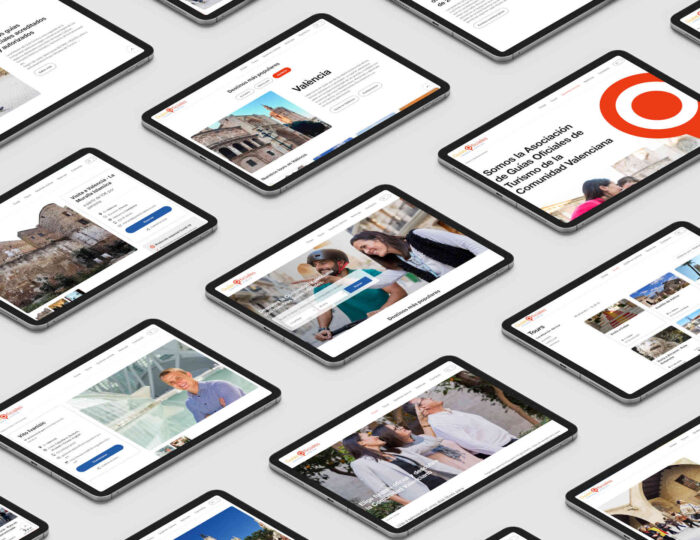Web design is a constantly evolving discipline, where trends change rapidly to adapt to the needs of users and new technologies. In 2025, the focus will be on creating more immersive and personalised experiences, combining creativity and technological innovation with usability-centric design. Below, we explore the key web design trends that will dominate this year.
Immersive design with augmented reality (AR) and virtual reality (VR)
The use of technologies such as augmented reality (AR) and virtual reality (VR) in web design is rapidly gaining popularity. These technologies allow users to interact with products or services in a more immersive and personalised way. Whether testing products virtually or exploring simulated environments, AR and VR enhance the user experience, providing a more dynamic and memorable interaction with brands.
Artificial intelligence (AI)-based interaction
Artificial intelligence continues to revolutionise web design, and 2025 will see an increase in its integration to improve personalisation and user interaction. Advanced chatbots, virtual assistants and predictive personalisation with AI will enable websites to anticipate user needs, offering tailored content and recommendations in real time. This technology not only improves usability, but also increases the efficiency of customer service.
Typography in motion
Motion typography is a trend that has been gaining traction and will become even more prominent in 2025. This approach involves the use of animated or dynamic text that attracts the user’s attention in a creative and entertaining way. Motion typography not only enhances visual design, but can also be used to tell a story or convey a message in a more impactful way, adding an extra layer of interaction to the design.
Customisable dark and light modes
Dark mode is still a popular trend, but by 2025 more websites are expected to offer users the ability to switch between dark and light mode according to their preference. This option improves the user experience, reducing eyestrain in low-light environments, and adapts to each user’s aesthetics and personal preferences. In addition, designs that offer this duality often stand out for their versatility, giving designers more creative freedom.
Subtle microinteractions
Microinteractions, such as small animations or scrolling effects that respond to user interaction, are key to enhancing the website experience. In 2025, these microinteractions will be more subtle and fluid, designed to guide the user without distracting them. For example, hover effects, colour changes or click-responsive icons provide a sense of dynamism and make navigation more intuitive.
Functional minimalism
Minimalism has been a dominant trend in web design for years, but in 2025 the focus will be even more on functionality. Functional minimalism involves eliminating unnecessary elements to focus on the essentials, improving both aesthetics and user experience. Websites with clean and organised designs, combining simplicity with clear navigation, remain effective because they facilitate interaction and avoid cognitive overload.
Asymmetrical and creative designs
In contrast to minimalism, we will also see a rise in the use of asymmetrical designs and unconventional layouts. This approach breaks away from the rigidity of traditional grids, offering a more creative and unique design. Asymmetric designs bring dynamism and help web pages stand out visually, allowing designers to play with negative space and create visually appealing layouts without compromising usability.
Speed and performance: the importance of Core Web Vitals
Google continues to prioritise the speed and performance of web pages, and in 2025, Core Web Vitals (user experience metrics such as load time, interactivity and visual stability) will continue to be a key factor in design. Websites will need to be optimised for fast load times, especially on mobile devices, without sacrificing visual quality or content. Designers will need to balance aesthetics with performance to ensure a fast and seamless experience.
3D elements and visual depth
The use of 3D elements in web design has grown in recent years, and this trend will continue to grow in 2025. Three-dimensional images, icons and buttons bring a sense of depth and realism to web pages. By using 3D graphics, designers can create a more immersive environment, capturing the user’s attention and enhancing visual interaction. In addition, 3D animations, when implemented sparingly, can add dynamism without affecting loading speed.
Narrative scroll and immersive experiences
Narrative scrolling, a technique where content unfolds as the user scrolls, is taking centre stage. This approach allows for more immersive browsing experiences, presenting content in a gradual manner and guiding the user through a story or narrative flow. Brands are using narrative scroll to deliver more interactive experiences, keeping users engaged and making it easier to absorb information in a progressive way.
Integrating video into backgrounds
The use of background video on websites is not new, but in 2025 we will see a more creative and thoughtful approach. Background videos can bring a sense of movement and life to a site, but they must be optimised so as not to slow down the page. Designers are expected to use short, looping videos or cinemagraphs (photos with small, repeated movements), which add dynamism without interfering with the user experience or site performance.
Personalised content through machine learning
Machine learning will allow websites to further personalise content based on individual user behaviour and preferences. By 2025, we will see more sites dynamically adapting product offerings, recommended items or even site layout based on users’ previous interactions. This real-time personalisation enhances the user experience, making content more relevant and engaging.
In 2025, web design will continue to evolve towards more interactive and personalised experiences, where usability and technological innovation will be paramount. The challenge for designers will be to balance creativity with functionality, ensuring that visual trends do not detract from performance and user experience. With a focus on mobile optimisation, loading speed and personalisation, websites that embrace these trends will be better positioned to stand out in an increasingly competitive digital environment.
Would you like to apply these trends to your project? Write to us and let’s talk about how to take your digital presence to the next level, combining web design and 3D technology.



